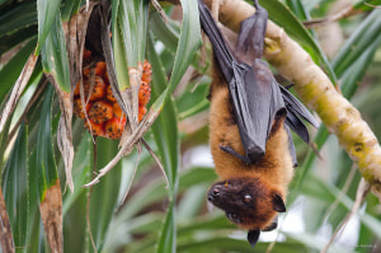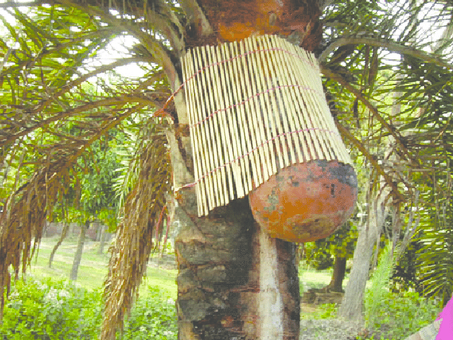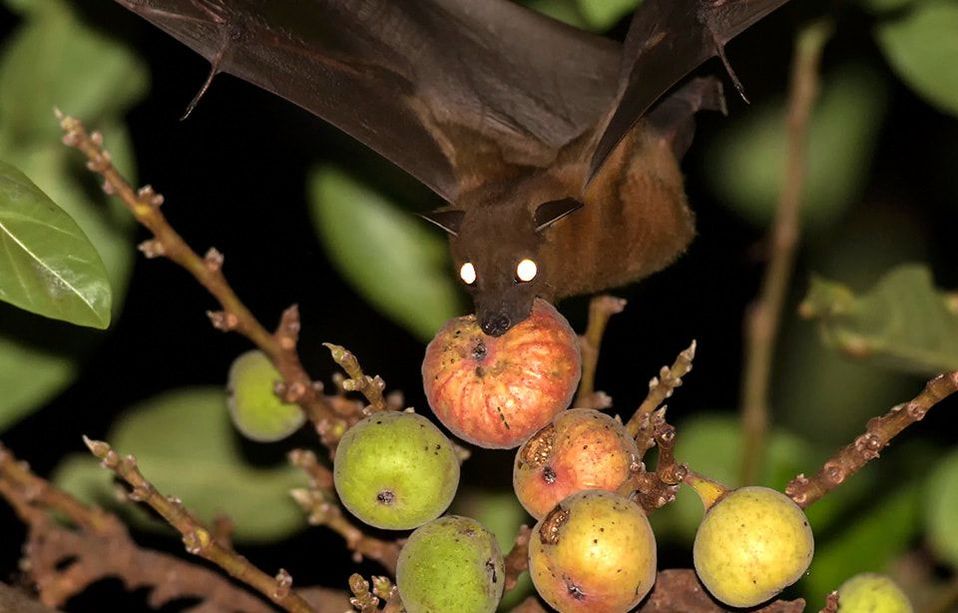 Fruit Bats Love to Drink a Cup of Raw Date Palm Sap Fruit Bats Love to Drink a Cup of Raw Date Palm Sap Kerala is on fire over Nipah virus ever since May 19th, 2018 when the Nipah virus disease (NiV) was first reported in the Kozhikode district of the state. Till now, there are 15 cases of confirmed deaths in the two affected districts, Kozhikode and Mallapuram in Kerala. Tracing the Origin of the Virus First outbreak of this virus was in the year 1998 in the Malaysian village Sungai Nipah (hence the name Nipah virus!) among pig farmers but there were no cases reported after that. Here, the virus transmission was traced to human exposure to pig secretions or contact with the tissue of a sick animal. Yet another outbreak occurred in Bangladesh in 2001 and the country has witnessed at least a few cases almost every year since then. Eastern India also witnessed rare outbreaks of the disease since 2001 (Siliguri in West Bengal was the first affected city in India). The disease outbreak in 2004 in Bangladesh and India were linked to the consumption of date palm sap contaminated by infected fruit bats (urine or saliva). Later outbreaks in Bangladesh and India were mostly due to human-to-human exposure through people’s saliva or excretions. Almost 75% cases reported in the Siliguri city of West Bengal (2001) was within a health-care setting amongst hospital staff or visitors. According to WHO, the Nipah virus has claimed over 300 lives across Malaysia, Singapore, Bangladesh and India between the years 1998 and 2008. Researchers have confirmed that the Bangladesh strain of the Nipah virus is the reason for this latest outbreak in Kerala (2018). Nipah Virus: Zoonotic Disease Nipah virus (NiV) is a zoonic disease (transmitted from animals to humans) that spreads via food or humans. NiV can also affect animals such as pigs severely and incur unwanted expenditure and losses for farmers. While the occurrence rate and numbers are low, the death percentage and severity are high making NiV a public health concern. Signs & Symptoms What makes this disease a deadly one is the incubation period which ranges anywhere from 4-14 days generally and even 45 days sometimes. Initial symptoms include fever, headache, muscle pain, vomiting and sore throat which is followed by dizziness, drowsiness, altered consciousness and neurological symptoms that indicate acute encephalitis (inflammation of the brain). Rarely, people do experience atypical pneumonia, severe respiratory problem and fatal encephalitis. Fatality rates exist anywhere between 40 and 75%. Mostly people with acute encephalitis recover fully but among them, almost 20% people are left with long-term neurologic conditions such as seizure disorder and personality changes. But if proper care is not taken within 24-48 hours after symptoms of delirium, drowsiness and confusion, it can turn into coma. Read more on encephalitis at www.firsteatright.com. Diagnosis Symptoms include influenza-like ones, don’t present themselves immediately and are non-specific which can prevent appropriate intervention, delay detection and take proper control measures. Also, the virus strain is evident only during the acute and convalescent phase of the disease. ELISA, PCR, virus isolation by cell culture and RT-PCR are the various test methods used for detection.  Protect the Raw Date Palm Sap with Bamboo Covering Protect the Raw Date Palm Sap with Bamboo Covering Treatment As of 2018, there are no drugs or vaccines available for treating the infection and the only feasible option is to offer intensive supportive care 24×7. Firstly, all patients suspected/confirmed of NiV must be isolated and given support care. Although the drug ribavirin shows positive effects against the virus in vitro, further research is needed. Also, passive immunization using a human monoclonal antibody targeting Nipah G glycoprotein has been evaluated in the post-exposure therapy in the ferret (mammal) model and was found to be beneficial (Centre for Disease Control and Prevention, United States). All treatment options are in the research stage and need further analysis. Given below are certain precautionary measures that need to be followed:
Comments are closed.
|
AVOID FRAUD. EAT SMART.+91 7846 800 800
AuthorDietitian & Nutritionist Dr. Nafeesa Imteyaz. Archives
November 2022
Categories
All
Dr. Nafeesa's Blog @blogspot |
- Home
- Written Testimonials
- Consult
- Clinics
- Blogs
-
Diet & Nutrition
- Diabetes Reversal
- IVF IUI not needed for PCOS PCOD Infertility
-
Medical Nutrition
>
-
Disease & Conditions
>
- Infertility | PCOS
- Diabetes Mellitus
- Cholesterol
- Hypothyroid
- Kidney Problems
- Hypertension
- Cardiovascular Diseases
- Liver Diseases
- Gastro intestinal disorder
- Cancer
- Metabolic Disorders
- Orthopedic Disorders
- Eating Disorders
- Dietary Recall
- Weight Record Filled By Clients
- Online Payment Transaction Details
- Online Clients Weight Check Form
- Our Program Package Service Charges
- Weight Record 2017 Clients
- Measurements sent by Clients
- Terms & Conditions Of Payment
- Thanks. Your Form is Submitted
- Video Testimonials
- Lifestyle & Wellness
- Lifestyle & Wellness Blog
- Allergy & Intolerance
- Weight Loss / Gain
- Weight Loss / Slimming Blog
-
Disease & Conditions
>
- Life Cycle Nutrition >
- Sports Nutrition >
- Integrity in Nutrition
- Knowledge Centre
© COPYRIGHT 2022. ALL RIGHTS RESERVED. FRST HEALTHCARE PVT LTD.
Dr. Nafeesa Imteyaz of First Eat Right clinic, is the Best Dietitian Nutritionist in Bangalore. Best Dietitian Nutritionist in Pune. Best Dietitian Nutritionist in Hyderabad. Best Dietitian Nutritionist in Chennai. Best Dietitian Nutritionist in Mumbai. Best Dietitian Nutritionist in Delhi. Best Dietitian Nutritionist in Kolkata.


